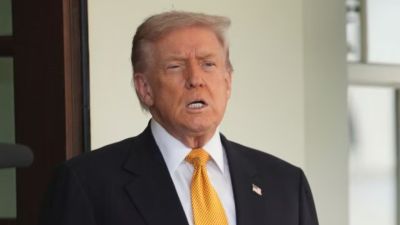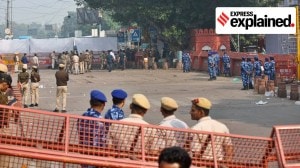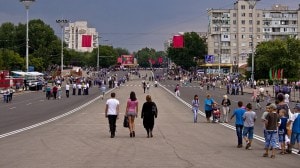LTTE was in touch with Karunanidhi
NEW DELHI, November 8: The Jain Commission's interim report, in its three crucial chapters -- "Threat and Perceptions", "Gro...

NEW DELHI, November 8: The Jain Commission’s interim report, in its three crucial chapters — "Threat and Perceptions", "Growth of Militancy in India", and "India’s foreign Policy" — has made a case for revamping India’s bureaucratic and intelligence set up.
Rajiv’s inadequate security cover
Threat perception: “Intelligence agencies did not put forward the required professional point of view…instead of a professional decision, the bureaucracy and the Intelligence Bureau based their reports (on the threats and security cover for Rajiv Gandhi) on the perception of the pervading political mood.”
SPG protection: “The downgrading of Rajiv’s SPG security cover, from 495 personnel to two Delhi police officials, was unjustified and not based on professional considerations.”
On the allegation that VP Singh deliberately and with malice withdrew the security cover, the commission notes that though this does not seem true, but the fact that the SPG cover was withdrawn contributed to a situation whereby the LTTE could assassinate Rajiv Gandhi in the way they did. The report says that the plea that there was not adequate man power in the SPG so that security cover could be provided to Rajiv Gandhi was baseless and not true. The report says that if after Rajiv Gandhi’s assassination, in September 1991, the same SPG could provide security to Narasimha Rao and his family, V.P. Singh and his family and Sonia Gandhi and her family, the SPG cover could obviously have been easily extended to Rajiv Gandhi.
On Chandra Shekhar and V P Singh governments: “A day before Rajiv Gandhi’s assassination, on May 20, 1991, the IB wrote a secret, most immediate letter saying: “…Last night car borne terrorists made a bold attempt against Sajjan Kumar where two police personnel and a bystander were killed … Earlier similar bold attempts were made on Jagdish Tytler.
Keeping the very high threat to security to Rajiv Gandhi in view, it is necessary to strengthen his security arrangement. It is requested that NSG escort may be provided to him immediately.” Copies of this letter were sent to then Cabinet Secretary Naresh Chandra, Secretary (security) OP Tandon, Home Secretary, and Principal Secretary to PM S.K. Mishra.
A note prepared and presented by Cabinet Secretary V.C. Pande to the Cabinet which on January 30, 1990, decided to withdraw Rajiv Gandhi’s SPG cover, said: “On verbal instructions of Seshan, the then Cabinet Secretary, SPG was asked to continue providing security to Rajiv Gandhi. This was purely temporary and ad hoc arrangement…
“According to the SPG Act, security deployment is meant for the PM and cannot be extended to an ex-PM…The scale of SPG deployed with Rajiv Gandhi continues as in the past. Though as many as 251 SPG personnel and 244 CRPF personnel are on duty with him at present, it is not possible to spare such a big man power out of the existing strength of SPG on a continuous basis.
The security arrangements for the PM are suffering…this has been adversely commented by the security agencies.” The note, which made no mention of the threats Rajiv Gandhi faced, also said, “Such a large deployment of SPG gives a high profile visibility (to Rajiv) and is attracting criticism even from state governments.”
Militant groups: “On February 4, 1991, DIG (intelligence) Madras circulated a note to police and other state agencies apprising them of the threats Rajiv Gandhi faced. Among the militant groups named were:
The role of TN Govts, especially the DMK
“Sri Lankan Tamil militancy spilled over to India when during the period 1982-1986, various Sri Lankan Tamil militant groups set up bases in India in Tamil Nadu, the Sri Lankan Tamil militants were carrying out propaganda, publicity and even training of their cadres in the know of the Central and State Government authorities. They also indulged in clandestine activities including procurement of armaments and smuggling activities. These militants enjoyed considerable support from some political parties.
“One of the most vociferous critics of the Accord was the DMK which claimed that the LTTE had never fully endorsed the ISLA. It was painted that the Government of India had abandoned the Tamil cause and was collaborating with the Sri Lankan Government in crushing the Tamils.
“Under the changed scenario, the LTTE made a strategic shift in their political alignments. They sent personal emissaries to Shri Karunanidhi for seeking his active support in their battle against the IPKF. These overtures by the LTTE towards the DMK started a chain of events which led to LTTE’s survival and growth in TN even when the entire attitude of the Government of India had changed towards the LTTE after the hostilities between the IPKF and LTTE in Sri Lanka.
“The M.G.R. Government of the day openly and overtly supported the militants and Shri V. Prabhakaran was quite close to him. The Centre had also helped the militants in training and arming. The leaders then were meeting militants to devise peaceful solution of the ethnic issue and not for encouraging militant activity.
“Soon after the DMK Government took over the reins of power in Tamil Nadu, the LTTE slowly began to consolidate itself in the State and their clandestine activities, heretofore dormant, became more and more pronounced. All the activities of LTTE at this stage towards resource mobilisation, propaganda and treatment of their wounded cadres, had taken an anti-national dimension.
“Credible reports exist of active connivance of some DMK leaders with the LTTE. The LTTE was in continuous interaction with the Chief Minister, Shri Karunanidhi, primarily to ensure that their activities continue unhindered even after the Padmanabha killing.
“From the evaluation of the material, The conclusion is irresistible that there was tacit support to the LTTE by Shri M. Karunanidhi and his Government and law enforcement agencies.”





- 01
- 02
- 03
- 04
- 05


























